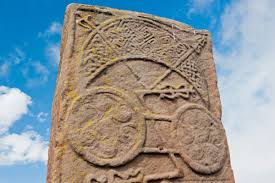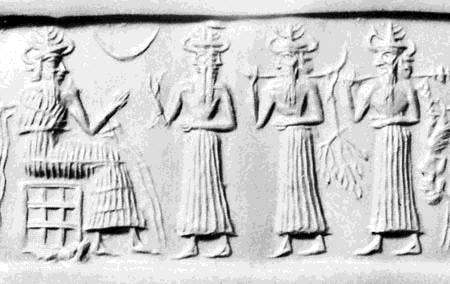It looks like you're using an Ad Blocker.
Please white-list or disable AboveTopSecret.com in your ad-blocking tool.
Thank you.
Some features of ATS will be disabled while you continue to use an ad-blocker.
share:
Hey Bean, thought you might enjoy hearing about this as it relates to your excellent thread....
STV
Coming online in April....
STV
Wemyss Caves hold the largest collection of Pictish carvings in north-west Europe. However, they are under constant threat from coastal erosion. The project, a joint effort between St Andrews University, York Archaeological Trust and a local community group, aims to scan the images and save them for future generations. The academics will showcase their findings online to reach a wider audience.
Coming online in April....
reply to post by Thorneblood
Thorneblood, that's so exciting!! I'm sending you over-enthusiastic hugs!
Thanks so much for adding this to the thread
Thorneblood, that's so exciting!! I'm sending you over-enthusiastic hugs!
Thanks so much for adding this to the thread
Back to tuning forks...
Whilst wondering what on earth the Picts could want with tuning forks, I came across a site which sells them:
I'm not entirely sure what to deduce from this. Did they use tuning forks to ensure the structures they built resonated in accordance with sacred geometry? Or at a certain pitch? Most of the findings from megalithic structures regarding sonic properties suggest this would be coincidental.
Whilst wondering what on earth the Picts could want with tuning forks, I came across a site which sells them:
The 35-note Universal Song “Sacred Geometry Scale” tuning fork set contains the most common ratios in sacred or archetypal geometry. Listening to these ratios helps us hear the proportions used for centuries by architects in the design of churches, temples, statues, and pyramids, as well as other sacred art and building applications. These ratios are part of the Ancient Building Code Science that created “living” architecture that resonated with the fractal patterns of our universe, making many sacred buildings architectural musical instruments.
This scale has 32 notes in a one octave range plus 3 notes that exceed the octave, these notes being the square root of 5, phi squared, and vedic pi= (14 minus the square root of 2) divided by 4. The basic constants square root of 2, 3, 5, square root of phi, and square root of pi are all contained so we can hear these important harmonic ratios of the geometric world of shape. Scales can be constructed for musicians, composers, educators, and sound practitioners who wish to explore the music of the spheres called shapes. The key is that shapes convey and induce resonance.
I'm not entirely sure what to deduce from this. Did they use tuning forks to ensure the structures they built resonated in accordance with sacred geometry? Or at a certain pitch? Most of the findings from megalithic structures regarding sonic properties suggest this would be coincidental.
reply to post by beansidhe
A member said it two pages back, a worthy connect worth further digging.
'PICTure' language of the Pict?
Pick into it, the Pitcher with the 'Pitch' from the 'Tuning Pitch Fork of the Cosmos' that you just posted about.
From etym:
Also tons from the Wiki:
Cruth is really close to words like Crutch or Scrutiny which is funny because:
Nothing may come of that though it could be total coincidence.
I think this is viable territory to wade into.
I'll think about it for awhile thanks for posting that last quote also.
A member said it two pages back, a worthy connect worth further digging.
'PICTure' language of the Pict?
Pick into it, the Pitcher with the 'Pitch' from the 'Tuning Pitch Fork of the Cosmos' that you just posted about.
From etym:
Pict (n.)
an ancient people of Great Britain, late 14c., from Late Latin Picti (late 3c., probably a nickname given them by Roman soldiers), usually taken as derived from picti "painted," but probably ultimately from the Celtic name of the tribe, perhaps Pehta, Peihta, literally "the fighters" (cf. Gaulish Pictavi, a different people, who gave the name to the French city of Poitiers). They painted and tattooed themselves, which may have suggested a Roman folk-etymology alteration of the name. The Old English name for the people was Peohtas.
Also tons from the Wiki:
Their Old English name[6] gave the modern Scots form Pechts and the Welsh word Fichti.[citation needed] In writings from Ireland, the name Cruthin, Cruthini, Cruthni, Cruithni or Cruithini (Modern Irish: Cruithne) was used to refer both to the Picts and to another group of people who lived alongside the Ulaid in eastern Ulster.[7] It is generally accepted that this is derived from *Qritani, which is the Goidelic/Q-Celtic version of the Britonnic/P-Celtic *Pritani.[8]
Cruth is really close to words like Crutch or Scrutiny which is funny because:
scrutiny (n.)
early 15c., "a vote to choose someone to decide a question," from Late Latin scrutinium "a search, inquiry"
Nothing may come of that though it could be total coincidence.
I think this is viable territory to wade into.
I'll think about it for awhile thanks for posting that last quote also.
reply to post by muzzleflash
The 'Tuning Pitch Fork of the Cosmos' from Mr. Hubble, with circles and spirals and Z-rods - oh my.
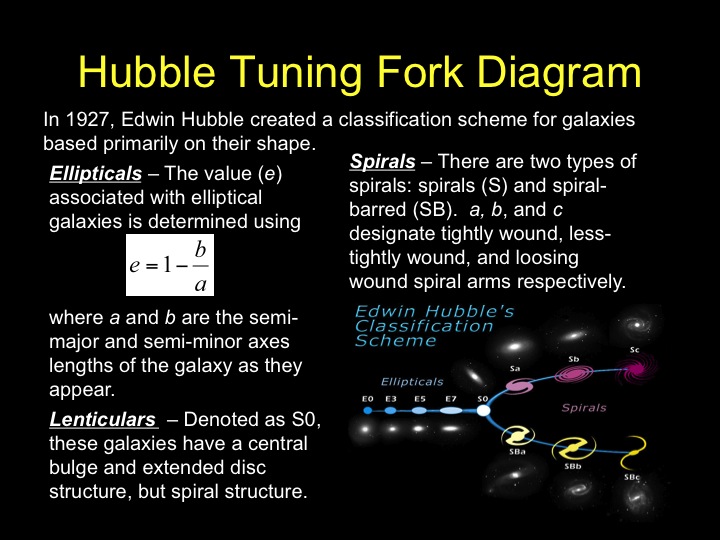
The 'Tuning Pitch Fork of the Cosmos' from Mr. Hubble, with circles and spirals and Z-rods - oh my.

The source at the bottom is an interesting web site in regards to the "Stones".
Source www.stonesofwonder.com...
Cheers
Ektar
'For what is Orientation, or Direction ? What is the meaning of North, South, East, or West ? How did we derive these fixed points to start with ? Not from any local or national origin ; for pure Direction is entirely independent of locality ; it is, in fact, derived solely from the movements of the "heavens". It is only by reference to the position of the stars, sun, or moon, that Azimuth, or true Direction, exists : there is no other meaning in the term. So that when [at Callanish] we find two lines of megaliths laid out on absolute "cardinal points", viz., West and South, the setting and nooning points respectively, we realize that it can only have been accomplished by some reference to the heavenly bodies....' [Boyle Somerville 1912, page 36] Alexander Thom, a Scotsman and professor of engineering at Oxford was the man who revived interest in megalithic astronomy in recent times. His work was based on surveys of hundreds of sites in Scotland, England, Wales and Brittany, and subsequent analysis of the results, which led him to believe that an eight, or even sixteen month solar calendar was in use in prehistoric times. He also confirmed the megalith builders' interest in the movements of the moon, and particularly in the extreme positions of the moon's 18.6 year cycle, the major and minor standstills. Thom also believed that his accurate surveys of the stone circles had revealed that a common unit of measurement was in use in prehistoric times, which he named the 'megalthic yard' of 2.72 feet (or 0.83 metres) [Thom 1967, 1971].
Source www.stonesofwonder.com...
Cheers
Ektar
If you want to see where the study of the Invereen Stone has led
this is a paper that links Pictish symbols to Irish Ogham
[gratuitous site link removed]
and this is a paper that confirms numerous Cyprus statues exhibit the same writing
[gratuitous site link removed]
and this is the same writing used to explain the geometrical symbols at Lascaux and Chauvet caves
[gratuitous site link removed]
and
[gratuitous site link removed]
and thsi is the same writing used to explain the Ishango bones in Africa
[gratuitous site link removed]
many of these samples are 30,000 years old. All use the same astronomical values to produce a very plausible alphabet
this is a paper that links Pictish symbols to Irish Ogham
[gratuitous site link removed]
and this is a paper that confirms numerous Cyprus statues exhibit the same writing
[gratuitous site link removed]
and this is the same writing used to explain the geometrical symbols at Lascaux and Chauvet caves
[gratuitous site link removed]
and
[gratuitous site link removed]
and thsi is the same writing used to explain the Ishango bones in Africa
[gratuitous site link removed]
many of these samples are 30,000 years old. All use the same astronomical values to produce a very plausible alphabet
edit on 2/9/2014 by
12m8keall2c because: [gratuitous site link removed]
reply to post by Ektar
That is interesting, thanks Ektar. I'll have a good read through, asap. And thanks for the lovely U2U!
That is interesting, thanks Ektar. I'll have a good read through, asap. And thanks for the lovely U2U!
reply to post by EnigmaticLInes
Wow, thanks Enigmatic Lines! That's some fascinating links and connections - I'll check them out.
Oh, and welcome to ATS! It's great that you can join us.
Wow, thanks Enigmatic Lines! That's some fascinating links and connections - I'll check them out.
Oh, and welcome to ATS! It's great that you can join us.
reply to post by muzzleflash
Hi Muzzleflash, I should have said earlier, but if you're thinking of etymology, the Picts are thought to have spoken a P-Celtic language, much like Welsh.
Sorry, I got tuned out with the forks!
Hi Muzzleflash, I should have said earlier, but if you're thinking of etymology, the Picts are thought to have spoken a P-Celtic language, much like Welsh.
Sorry, I got tuned out with the forks!
Irish Ogham script

Pictish stone with Ogham writing
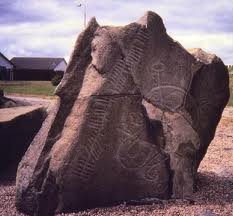
This is the stone you were thinking of, Enigmatic Lines?
That would suggest a much earlier link with Ireland then? The Picts are known to have lived on the east coast and Perthshire etc. Unless of course the script was carved later?

Pictish stone with Ogham writing

This is the stone you were thinking of, Enigmatic Lines?
That would suggest a much earlier link with Ireland then? The Picts are known to have lived on the east coast and Perthshire etc. Unless of course the script was carved later?
beansidhe
Do you happen to know the exact location where this stone was found?
reply to post by Logarock
The nearest one to the river (I think) seems to be the Dunfallandy stone at Pitlochry, although the Tay goes so far North it's hard to be sure. There's also plenty throughout Perthshire.
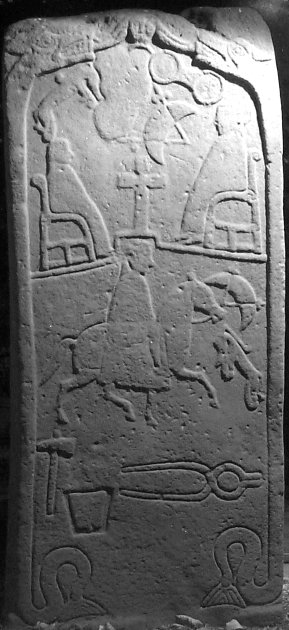
Here's a good link to a map of all the stones:
Pictish Stones database - map
The stone in your picture is the Aberlemno stone (no.3), near Brechin, Angus as far as I know.
Whilst checking for the Dunfallandy stone, I noticed that the translation for 'pit' as in Pittenweem, Pitlochry etc means 'parcel of land', which might just give credence to Stormcell's thought that the stones were primarily boundary markers. Well in, Stormcell!
The nearest one to the river (I think) seems to be the Dunfallandy stone at Pitlochry, although the Tay goes so far North it's hard to be sure. There's also plenty throughout Perthshire.

Here's a good link to a map of all the stones:
Pictish Stones database - map
The stone in your picture is the Aberlemno stone (no.3), near Brechin, Angus as far as I know.
Whilst checking for the Dunfallandy stone, I noticed that the translation for 'pit' as in Pittenweem, Pitlochry etc means 'parcel of land', which might just give credence to Stormcell's thought that the stones were primarily boundary markers. Well in, Stormcell!
reply to post by beansidhe
The above stone is interesting for its employment of a christian symbol in conjunction with traditional Pictish symbols. Also this looks to be clearly a royal montage.
The above stone is interesting for its employment of a christian symbol in conjunction with traditional Pictish symbols. Also this looks to be clearly a royal montage.
reply to post by Logarock
The Aberlemno (3) stone is a class 2 stone, meaning it has Christian iconography on it, which is very interesting - were they 'Christianised' by then, or was it a parallel co-existence?
A royal montage? Like a coat of arms? That's an exciting prospect!
The Aberlemno (3) stone is a class 2 stone, meaning it has Christian iconography on it, which is very interesting - were they 'Christianised' by then, or was it a parallel co-existence?
A royal montage? Like a coat of arms? That's an exciting prospect!
reply to post by beansidhe
Yes two figures, here apparently king and queen, setting or standing on both sides of an object. Setting represents seated established power and the "T" in the chairs represent land. These symbols go all the way back to Summer. You see them everywhere. Just look at the seated kings of Egypt for example and just about every other royal motif of the time period. Rome, Greek ect. Same with the raised weapon motifs.
Getting a grip on who these royals may have claimed ascendance from will be found in a good study of that crescent moon symbol so prevalent in this art.
The "dog" icon if I am not mistaken is strong in Scythian art.
I have read where Celts were once prevalent as far south in the European mainland as to include costal areas in what is today Yugoslavia. I believe the "crescent moon" was used in that area.....Hittite, Greek.
Yes two figures, here apparently king and queen, setting or standing on both sides of an object. Setting represents seated established power and the "T" in the chairs represent land. These symbols go all the way back to Summer. You see them everywhere. Just look at the seated kings of Egypt for example and just about every other royal motif of the time period. Rome, Greek ect. Same with the raised weapon motifs.
Getting a grip on who these royals may have claimed ascendance from will be found in a good study of that crescent moon symbol so prevalent in this art.
The "dog" icon if I am not mistaken is strong in Scythian art.
I have read where Celts were once prevalent as far south in the European mainland as to include costal areas in what is today Yugoslavia. I believe the "crescent moon" was used in that area.....Hittite, Greek.
edit on 10-2-2014 by Logarock because: n
reply to post by Logarock
Aah, I see what you mean! On the Dunfallandy stone? Yes, of course, that makes sense. Am I right in thinking then that the crescent V rod and the Z rod are male symbols because they're beside the King? And the Pictish beastie is then female as it's over the queen?
This is exciting, Logarock!
Aah, I see what you mean! On the Dunfallandy stone? Yes, of course, that makes sense. Am I right in thinking then that the crescent V rod and the Z rod are male symbols because they're beside the King? And the Pictish beastie is then female as it's over the queen?
This is exciting, Logarock!
reply to post by beansidhe

Here is but an example to wet the appetite. Although I fear I may never hear from you again once this bug bites!
Note the "T" in the hollow of the kings chair.

Here is but an example to wet the appetite. Although I fear I may never hear from you again once this bug bites!
Note the "T" in the hollow of the kings chair.
new topics
-
Sweet Home Alabama (metal cover by Leo Moracchioli)
Music: 46 minutes ago -
FBI confirms new leads connected to DNA evidence and cellphone data in disturbing killings of elderl
Other Current Events: 3 hours ago -
Moyes No Longer Blowing Bubbles
World Sports: 3 hours ago -
Breaking--Hamas Accepts New Cease Fire
Middle East Issues: 4 hours ago -
Soros, Rockefeller and Pritzker, according to a POLITICO analysis Back Palestinian protests
US Political Madness: 4 hours ago -
Tornado Obliterates Nebraska Building with Furious Anger
Fragile Earth: 4 hours ago -
They say justice is blind.
Religion, Faith, And Theology: 5 hours ago -
Liberal Democrats to Table a Motion of No Confidence in the government Tomorrow
Regional Politics: 6 hours ago -
Time Traveler Caught on Camera?
Paranormal Studies: 7 hours ago -
Trump legal cases are falling apart at break neck speeds
US Political Madness: 7 hours ago
top topics
-
Medvedev: “No one can hide, a global catastrophe is coming”
World War Three: 8 hours ago, 15 flags -
Trump legal cases are falling apart at break neck speeds
US Political Madness: 7 hours ago, 15 flags -
We are screwed
Global Meltdown: 7 hours ago, 13 flags -
Soros, Rockefeller and Pritzker, according to a POLITICO analysis Back Palestinian protests
US Political Madness: 4 hours ago, 12 flags -
Breaking--Hamas Accepts New Cease Fire
Middle East Issues: 4 hours ago, 7 flags -
Time Traveler Caught on Camera?
Paranormal Studies: 7 hours ago, 5 flags -
Tornado Obliterates Nebraska Building with Furious Anger
Fragile Earth: 4 hours ago, 5 flags -
Liberal Democrats to Table a Motion of No Confidence in the government Tomorrow
Regional Politics: 6 hours ago, 4 flags -
FBI confirms new leads connected to DNA evidence and cellphone data in disturbing killings of elderl
Other Current Events: 3 hours ago, 3 flags -
Messages of Hope – Unity through AI
Dreams & Predictions: 16 hours ago, 3 flags
active topics
-
Candidate TRUMP Now Has Crazy Judge JUAN MERCHAN After Him - The Stormy Daniels Hush-Money Case.
Political Conspiracies • 1255 • : matafuchs -
Medvedev: “No one can hide, a global catastrophe is coming”
World War Three • 147 • : Oldcarpy2 -
Really Unexplained
General Chit Chat • 158 • : KnowItAllKnowNothin -
Moyes No Longer Blowing Bubbles
World Sports • 5 • : xWorldxGonexMadx -
Big Storms
Fragile Earth • 31 • : lilzazz -
Zionists of ATS assemble
Political Issues • 187 • : Lazy88 -
Sweet Home Alabama (metal cover by Leo Moracchioli)
Music • 2 • : TimBurr -
Trump legal cases are falling apart at break neck speeds
US Political Madness • 25 • : fringeofthefringe -
Breaking--Hamas Accepts New Cease Fire
Middle East Issues • 34 • : xuenchen -
Gov Kristi Noem Shot and Killed "Less Than Worthless Dog" and a 'Smelly Goat
2024 Elections • 173 • : lilzazz

